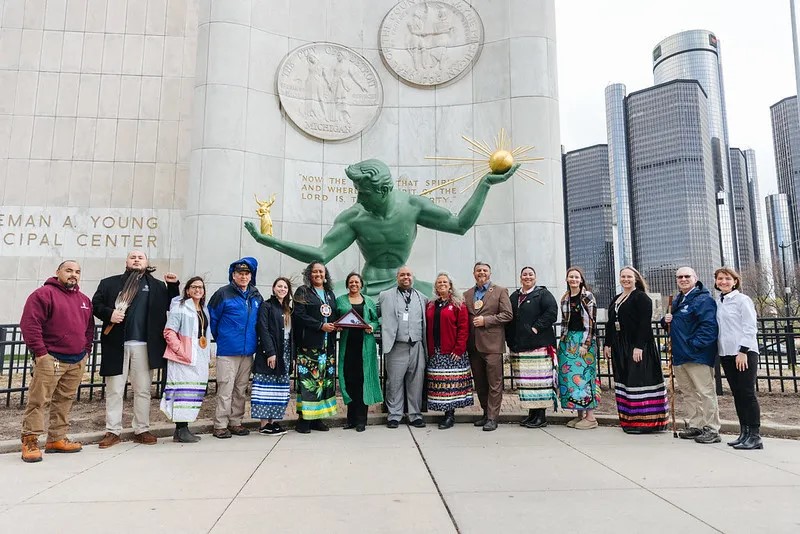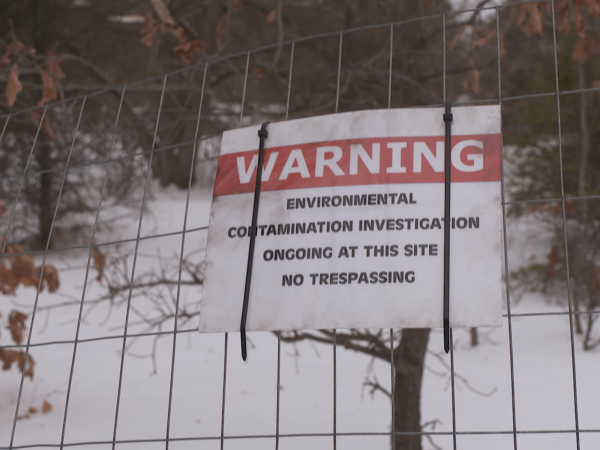
By Malachi Barrett, BridgeDetroit
This article was republished here with permission from BridgeDetroit.
Indigenous people have regained control of a sacred burial mound at Historic Fort Wayne dating back more than 1,000 years.
The City Council unanimously approved a deed transfer giving a 0.58-acre site to the Nottawaseppi Huron Band of the Potawatomi (NHBP) for $1. Members of the tribe said the property handoff is an important recognition of their sovereignty and deep connection to the land they inhabited long before it became known as Detroit.
“Our primary goal is to secure the long-term responsibility of protecting and preserving the Fort Wayne mound, ensuring our ancestors have a resting place and are treated with the respect and dignity they deserve,” said Tribal Chairperson Dorie Rios. “This deed transfer marks the beginning of a renewed era of collaboration and engagement between NHBP and Detroit. This is truly what a government-to-government relationship should look like.”
Vice Chair Robyn Elkins became emotional while explaining that it’s taken years of work to finally reclaim the mounds. She said, “It’s hard to believe this is happening.”

(City of Detroit photo)
The site was once part of a larger burial complex, the Springwells Mound Group, which consisted of roughly 20 earthworks along a riverside bluff. Burial mounds hold significant cultural and spiritual importance.
City officials said the mound dates back to 750 A.D., far predating Detroit’s founding as a French settlement in 1701.
Native leaders gathered on the bluffs at Springwells after the War of 1812 to negotiate a treaty with the United States. A star-shaped fort was built there, named after Gen. Anthony Wayne, displacing some burial mounds.
Many of the mounds were destroyed during excavations across the years by archaeologists who stocked museums with human skeletons and artifacts. Archeologist Henry Gillman in 1873 remarked on human skulls in racist terms, recording characteristics found in “lower races of man.”
Rios said the NHBP reclaimed ancestral remains and burial items from the mound group in 2014. The Tribe reburied them in a repatriation ceremony at an ancestral cemetery.
The U.S. Army Corps of Engineers recently unearthed human remains belonging to “one individual of Native American ancestry” at Fort Wayne. The Army Corps is carrying out a process to determine the fate of the remains.
Today, the mound is fenced off to restrict access.
The city consulted with the NHBP and other tribal governments, including the Saginaw Chippewa Tribe of Michigan, the Ottawa Tribe of Oklahoma, Wyandotte Nation, Eastern Shawnee Tribe of Oklahoma and Wyandot of Anderdon Nation.
“This has been a very long time coming,” said Council Member Coleman Young II. “We all know that this was and still is native land. We are very familiar not just with the genocide that took place in order for this country to be built, but also the spiritual connection that you have to this land.”
Council Member Angela Whitfield-Callowaysaid last week that the transfer is an “attempt to right a wrong.” She confirmed that a $100,000 study of capital improvements at Historic Fort Wayne included in last year’s budget is moving forward.
“It’s a tragedy what happened over there,” she said. “You have to fight back the tears (when you) see how this city has allowed those buildings to fall into such disrepair.”
Catch more news at Great Lakes Now:
Featured image: The City Council unanimously approved a deed transfer giving a 0.58-acre site to the Nottawaseppi Huron Band of the Potawatomi (NHBP) for $1. (City of Detroit photo)




